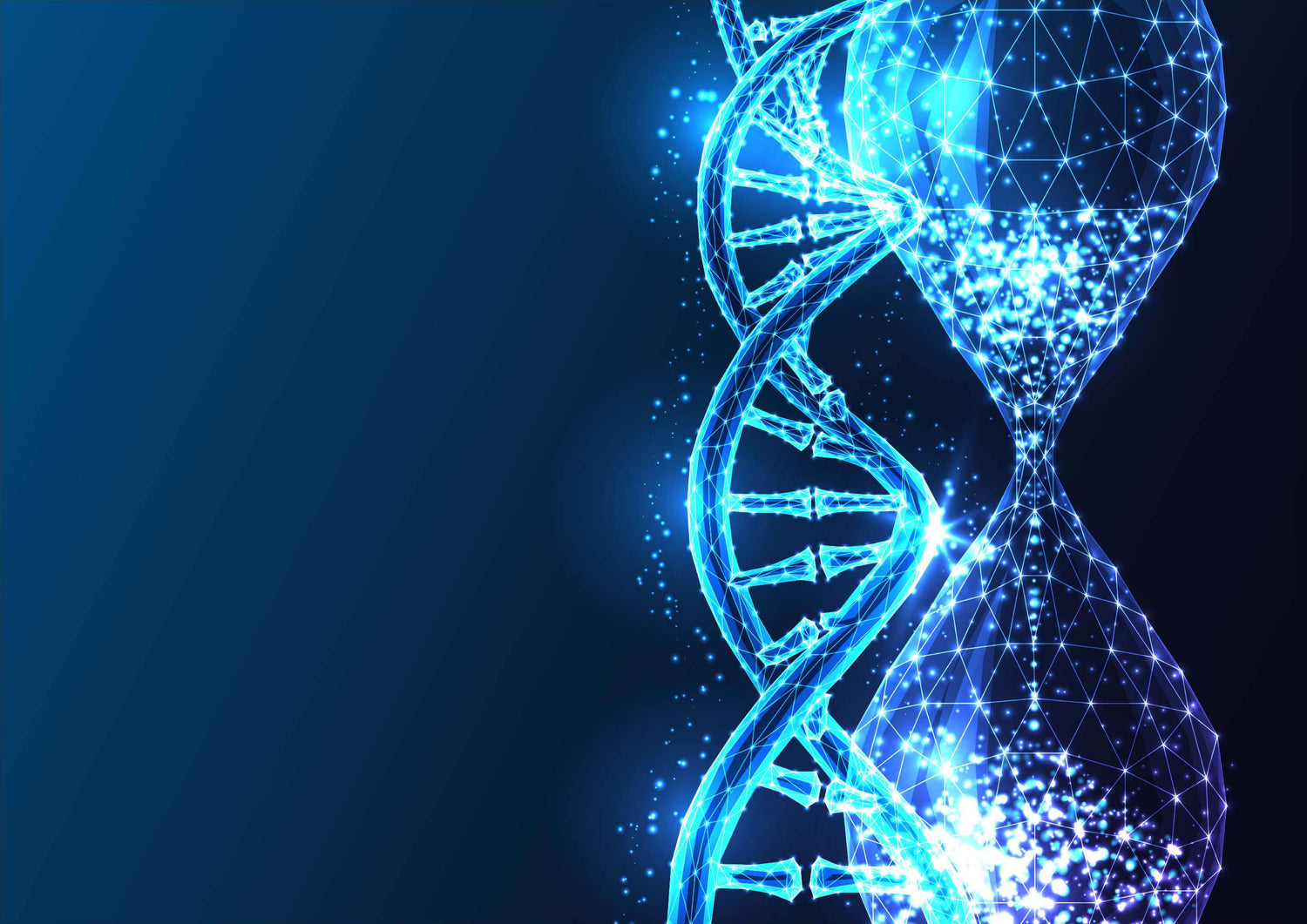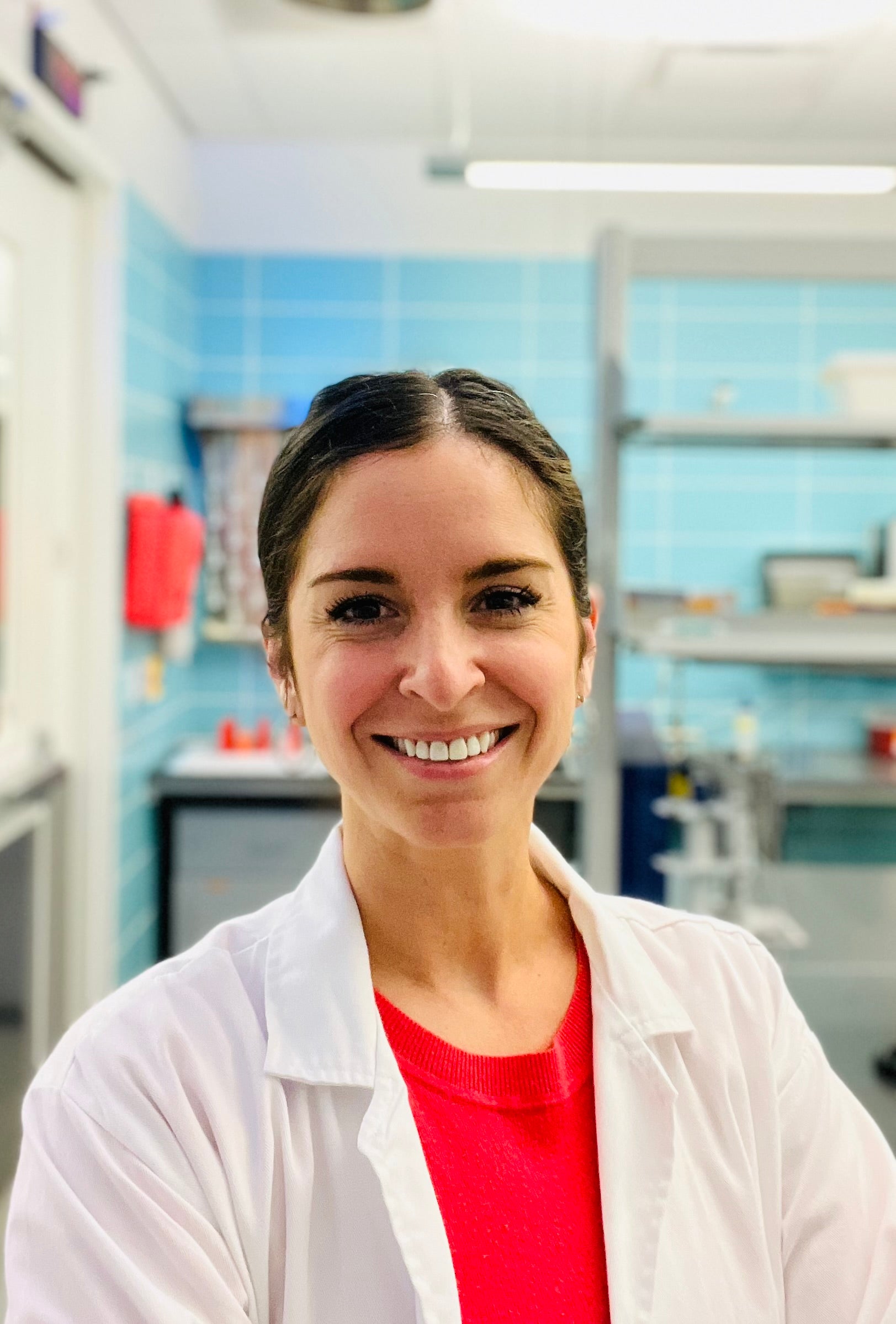Recently, researchers have developed many interesting new methods to measure biological age, using a variety of different tools and biomarkers. These measures examine everything from cell health to DNA patterns, giving you a sneak peek at how your body is actually aging at a molecular level.
Here, we take a closer look at 8 ways that scientists measure biological aging, plus a few simple and effective habits you can try to help slow down the clock.
1. NAD+ Levels
Nicotinamide adenine dinucleotide (NAD+) plays a pivotal role in cellular health and longevity, regulating everything from DNA repair to inflammation, autophagy, metabolism, and more. (1) Because NAD+ levels gradually decline as you get older, many people take NAD+ precursors — such as nicotinamide mononucleotide (NMN) and nicotinamide riboside (NR) — to bump up levels of NAD+ and slow signs of aging. In fact, studies suggest that these supplements may even help combat cognitive decline, balance blood sugar, and enhance physical function. (2)
Scientists often measure aging by analyzing NAD+ levels in the blood and closely tracking changes over time. Home testing kits are also available, which allow you to keep tabs on your NAD+ levels using a simple finger-stick test. If you’re taking anti-aging supplements or making lifestyle changes aimed at extending your lifespan, these home kits can be a useful addition to your longevity-boosting regimen. They can also provide additional insights into your rate of aging so you can make more informed choices to manage your health.
2. DNA Methylation
Aging causes several changes in your body, right down to your DNA. DNA methylation — a chemical process that occurs when methyl groups are added to DNA — is one of the most widely studied markers of aging. As you get older, DNA methylation patterns shift and influence gene expression, without altering your actual genetic code. (3)
Researchers have developed several epigenetic clocks, which are able to predict your biological age using DNA methylation. The Horvath clock, for example, was the first multi-tissue DNA-based age predictor, originally developed by geneticist Steve Horvath using data collected from around 8,000 people of all ages. (4) GrimAge is another epigenetic clock, which has gained attention for its accuracy and ability to outperform other age predictors. In addition to DNA methylation, it also considers lifetime tobacco exposure to estimate your potential lifespan. (5)
3. Proteomics
Proteomics — or the study of proteins — can be a powerful tool used to measure aging and health at a cellular level. Research shows that approximately two-thirds of all 1,128 common proteins in the body are altered with age in two or more different types of tissues or cells. (6) And interestingly enough, one study even found that proteomic aging could be linked with age-related measures of biological, physical, and cognitive function, plus a higher incidence of 18 chronic conditions. (7) Analyzing shifts in these protein patterns could provide valuable insights into both your biological age and overall aging trajectory.
4. Metabolomics
Metabolomics studies changes in your body’s chemistry, including both natural biological processes and the effects of external factors, like your environment or what you’re putting on your plate. A variety of metabolomic biomarkers have been linked to aging, including certain ketone bodies, amino acids, and fatty acids, among others. Scientists have found that shifts in these biomarkers are closely connected to aging metrics like your chronological age, telomere length, and health status. Tools like MetaboHealth and MetaboAge use metabolomics to measure biological age, predict life expectancy, and estimate age-related health risks. (8, 9)
5. Glycomics
Glycomics — defined as the study of complex carbohydrates (aka glycans) — can play a key role when it comes to understanding aging. In fact, age-related changes in glycosylation patterns (the process of attaching carbs to proteins or fats) may even serve as a biomarker of biological age.
More specifically, certain chains of N-glycans that are missing galactose (a simple sugar) could be used as an indicator of aging. These molecules are often found on immunoglobulin G (IgG), a type of antibody that contributes to inflammation. As you age, levels of pro-inflammatory IgG start to slowly increase, triggering a cycle of chronic, low-grade inflammation, sometimes called “inflammaging.” (10) According to researchers, glycomics could pave the way for a more personalized approach to help target and treat inflammaging. (11)
6. Mitochondrial Function
Mitochondria — often dubbed the “powerhouse of the cell” — are responsible for generating energy to fuel the cells throughout your body. But as you get older, oxidative stress can disrupt the membranes of the mitochondria, triggering a range of issues that fuel the aging process, from DNA mutations to increased production of free radicals. (12) Mitochondrial dysfunction is also closely linked to cellular senescence, which occurs when the cells stop growing and dividing. (13)
Not only is mitochondrial dysfunction tied to age-related disorders, but it may also be a key indicator of aging. (12) Scientists can measure mitochondrial function using tests like the oxygen consumption rate, which evaluates how much oxygen is consumed by cell samples. (14) Unfortunately, diagnosing mitochondrial dysfunction can be a bit tricky, as scientists have yet to pinpoint a blood biomarker with 100% accuracy and specificity. (15)
7. Immune System Aging
Aging causes a long list of changes throughout your body, including within your immune system. Over time, your immune system becomes less efficient at regulating inflammation, leading to a constant, low-level inflammatory response, also known as inflammaging. Increased levels of inflammaging biomarkers — including interleukin-6 (IL-6), C-reactive protein (CRP), and tumor necrosis factor-alpha (TNF-a) — can be considered a sign of aging. In a comprehensive analysis of 44 studies, IL-6 and CRP were the two immune markers most consistently associated with frailty, or age-related decline. (16)
8. Telomere Length
Telomeres serve as the protective caps for your chromosomes, which help prevent them from fraying and sticking together. Every time your cells divide, your telomeres become a tiny bit shorter. The cell eventually dies when it can no longer divide successfully because the telomeres are too short. (17)
Telomere length is a well-known indicator of aging. If your telomeres are shorter than average for your age, you may be aging faster at a cellular level. On the flip side, longer telomeres may mean that you’re aging at a slower pace.
That being said, the science isn’t completely clear-cut on whether changes in telomere length are actually a cause or an effect of aging. Instead of using it as a single biomarker of biological age, researchers note that it may be most accurate paired with other measures. (18)
How to Slow Down Your Biological Clock
Want to feel younger for longer? While it might not be possible to turn back time, there are several steps you can take to make sure your biological clock isn’t ticking faster than necessary. From lifestyle tweaks to science-backed habits, there are plenty of proven ways you can support longevity and feel your best for years to come.
Stay active
Squeezing more physical activity into your daily routine is a great way to support healthy aging. In fact, a recent study published in Biology found that regular strength training was tied to longer telomeres and less biological aging, even after adjusting for other variables. (19) As a general rule of thumb, aim for at least 150 minutes of moderate-intensity physical activity five days per week, along with two days of strength training. (20)
Switch up your diet
In addition to warding off chronic disease, a balanced diet may even add extra years to your life expectancy, according to research. In a 2023 study, scientists found that shifting to a healthier diet pattern aimed at supporting longevity increased life expectancy by 10.8 years and 10.4 years in males and females, respectively. (21) While there’s no one-size-fits-all diet plan to slow signs of aging, filling up on fruits, vegetables, whole grains, and nuts and cutting back on sugar, processed meats, and fried foods is a solid place to start.
Get more sleep
Not getting enough sleep each night may be linked to shortened telomeres, increased cellular senescence, and accelerated aging. (22) Ideally, you should aim for around 7-9 hours of sleep each night to support overall health and aging.
Quit smoking
It’s well-known that exposure to cigarette smoke can damage the tissues in your body. Over time, this damage can start to snowball, leading to a faster rate of aging. (23) If you smoke, cutting back or quitting may be especially beneficial for your biological clock.
Manage stress levels
Chronic stress can trigger the release of stress hormones like cortisol and ramp up inflammation, oxidative stress, and cell damage, all of which accelerate the aging process. Fortunately, research suggests that stress-induced increases in your biological age can actually be reversed following recovery from stress. (24) Whether you prefer unwinding with a bubble bath, finding your zen on the yoga mat, or venting to a friend, adding a few stress-busting strategies to your routine may prevent faster aging.
Conclusion
Understanding how scientists measure biological age can give you a clearer picture of how your body is aging at a cellular level. Unlike chronological age, biological age reflects how well your body is functioning — and the good news is, it’s something you can influence. Although aging is unavoidable, following a balanced diet, staying active, managing stress levels, and prioritizing sleep can help support longevity and slow down your biological clock.




